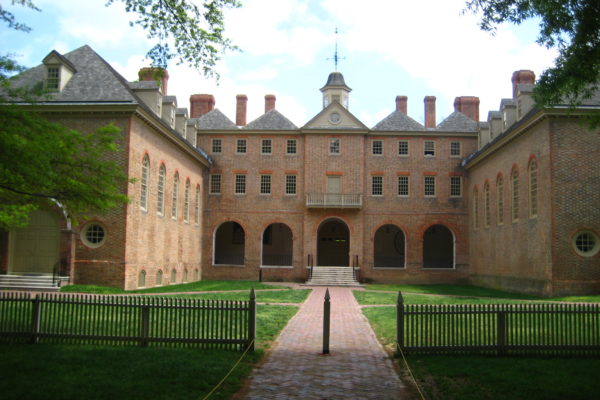Tiffany Broadbent Beker and Sarah Juliano from William & Mary tackled a topic important to so many of us: how our many campus events (of various size and importance) fit into our content strategy and execution with their #heweb16 presentation, “Events in Stereo: How to Help Your Campus Events and Campaigns Succeed.”
Tiffany works in university web and design, while Sarah works in advancement for social media for alumni and giving. They handle giving days to sporting events to commencement to homecoming. People are looking for information about your event and they’re looking on social media. Being active can make them attend event or follow it better.
Questions to ask
First ask “why”? Find a meaningful way to make social media part of your event, especially if it’s something they already share. Ask “how?” people can participate. Ask “what?” they can do. Ask “who?” is posting and on-site or scheduled; what about logistics — is there wi-fi, are there more than one and how do they interact. Ask “when?” in that social media is not an afterthought but part of planning.
Think about goals — can you set some that show the value and success of your event? Searchability is key to seeing all thoughts on one event or topic, adding context to your content. Hashtag also helps identify members of your community interested and involved in your event — creates connectivity and community. Hashtags offer cross-platform unity, including website, social media, signs and lanyards to encourage participation. Hashtags extend visibility beyond your accounts and spreads word of mouth on what you’re doing.
Research also shows that hashtags do increase engagement, but using more hashtags can decrease engagement. They can also serve to preserve your event.
Always check on a hashtag before you use it to be sure others aren’t already using it — this actually happened for William & Mary’s Homecoming. Be specific; use consistent abbreviations and terms. Also keep it short, two or three words at most, and use title case to make more clear. Make sure it’s readable and memorable — even test it in advance with colleagues or those active in social media.
Once you have hashtag as that backbone, think about content strategy: things you want to make sure people know, tactics to cultivate involvement, show “behind the scenes” bonus content and think about whether you’re also live-tweeting your event.
Hashtag examples
Example is #OneTribeOneDay, William & Mary’s annual one-day giving challenge. They created six videos depicting TV dreams of their college president. Because they were different and fun, they became very popular and made it so when people unlocked donor goals they would release another video. Hashtags gave a home to this activity.
They created a social media event guide for #OneTribeOneDay on hashtag, consistent messaging and why it’s important. They also create pre-written posts as well as pre-approved images, cover photos, news articles and other usable content. Distribute your guide as far and wide as you can, including student ambassadors, staff, board and social media users group. People have thanked them for helping them participate and feel like an active part of the events. If you’re utilizing you community right, everybody can be a social media ambassador. Offer content people will want to share. They also sometimes ask questions, such as where their first dorm was. The popularity of the content increased engagement and giving. When you crowdsource from the event, you add more vitality to the event and encourage participating.
They also do #MarchOnTribe as their men’s basketball team tries to capture its first NCAA Tournament bid. Work with as many offices and organizations as possible to celebrate team’s achievements, celebrate student-athletes, cultivate pride and encourage participation on social media or by attending games. They also focus on student-athlete achievements to reinforce academic quality and achievements of student-athletes. William & Mary offered up imagery with hashtag and added a pseudo-social media guide with ticket and game information, pointed to social media channels, included hashtags to use, shared news stories and provided a unifying guide to all people needed to know about #MarchOnTribe. Also gave people an opportunity to buy apparel and make donations. They succeeded with the most prominent turnout at their conference tournament and highest hashtag participation.
Ultimately they recommend utilize existing communication channels, make it easy, don’t be afraid to break down a silo (or two) and share the love or make sure you acknowledge everybody’s awesome contributions.
They also cultivate #wmgrad for their annual graduation. Much of the focus is celebrating graduates. They added a Snapchat filter (their first) and took every opportunity to make their hashtag known. William & Mary added a moderated social-media photo slideshow curating images posted on the hashtag to share the love.
For #wmhomecoming and #forthebold campaign launch they created activities and prompts, such as a selfie challenge. Their build up also began cohesive branding, including restrooms that included their #forthebold. Supporting the campaign included infographics showing the why behind the fundraising. They even had the Empire State Building to a green and gold lighting, teased it in advance and used an animated gif to announce the upcoming lighting. The night of the lighting they did a Facebook Live video of the lighting itself to put people right in the environment.
The presenters mentioned the balance between engagement and fundraising with open communication and not doing a hard ask. People want to feel good but they don’t want you asking for money. Know when to say “no” from pushing them too far, but you can ask “why” instead to come up with something better.
Finally, they would drag and drop the best posts into Storify so they can share on social media as well as save as PDF to distribute to show success.

